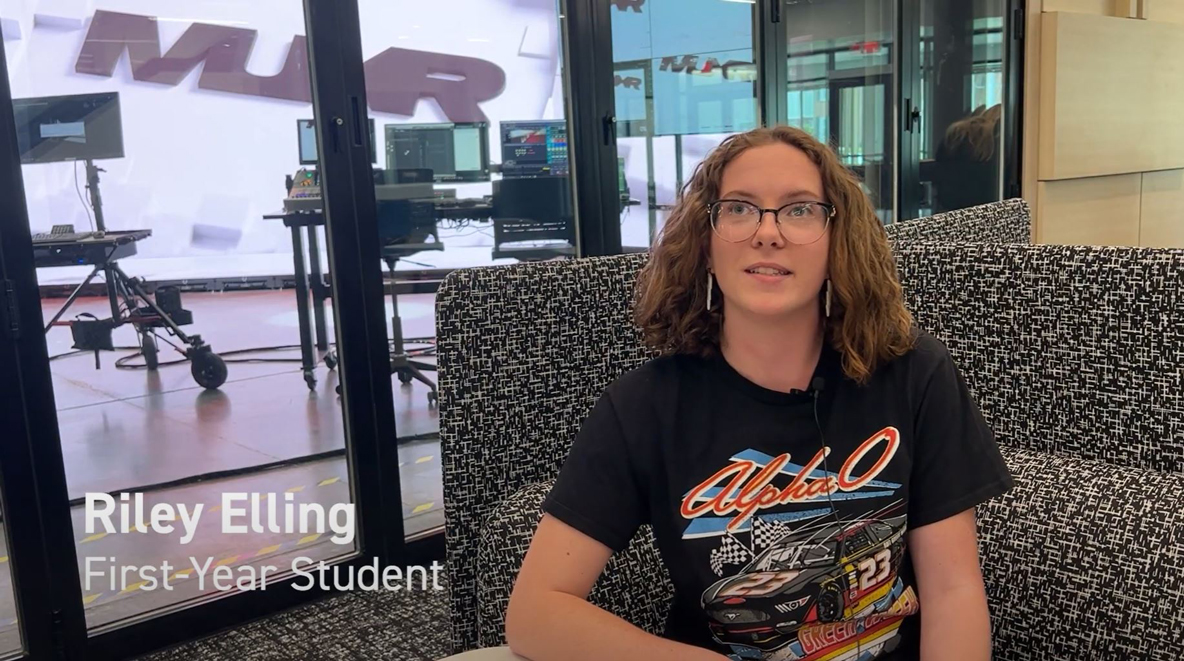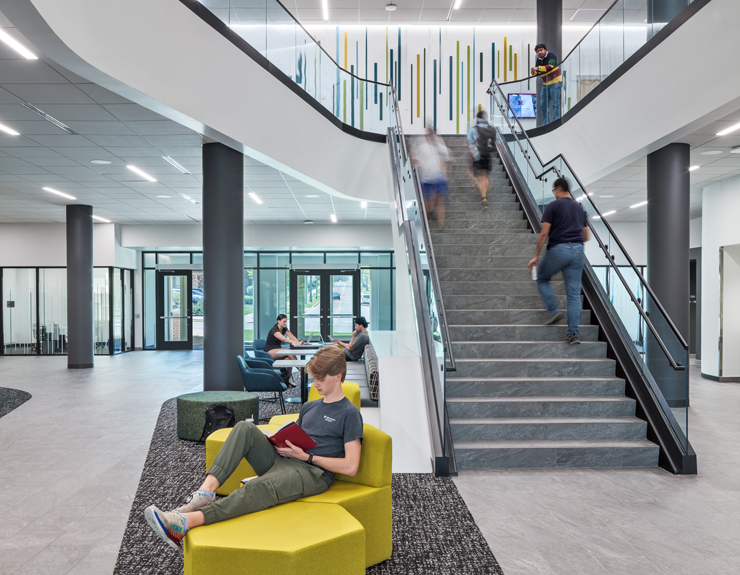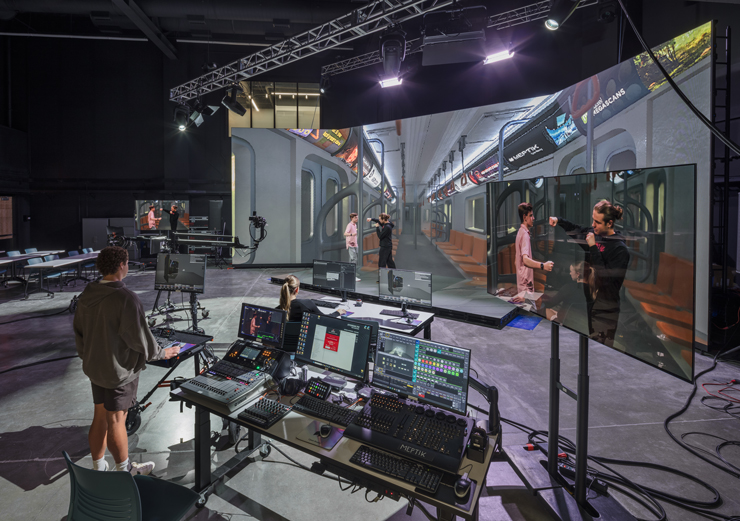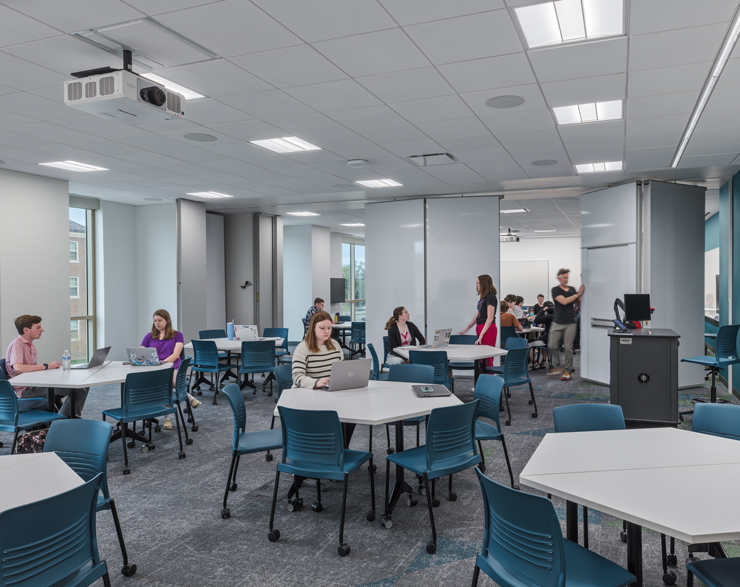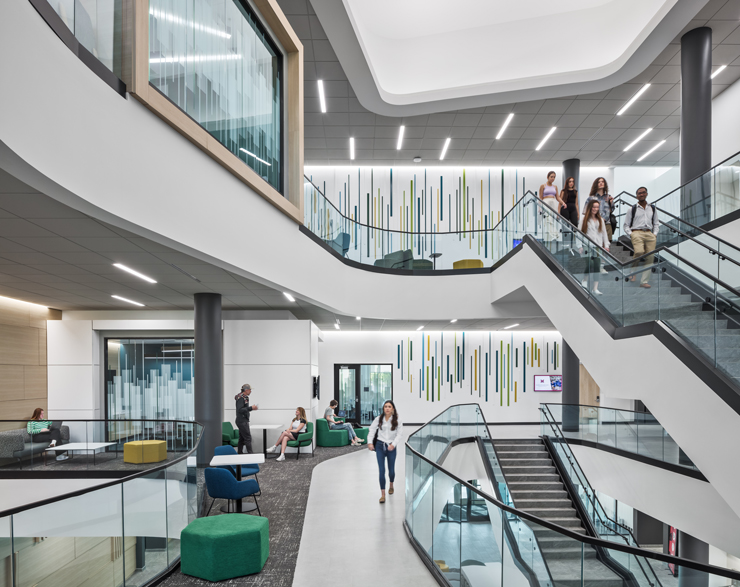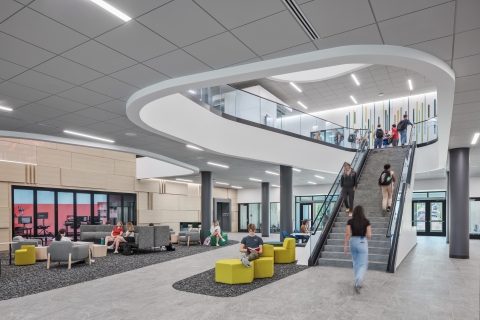
Client
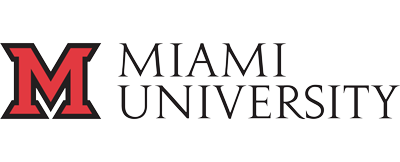
are housed inside the building, along with 14 classrooms and 12 conference/seminar rooms.
McVey Data Science Building
01 Challenge
Miami University sought to establish a cutting-edge facility to bridge academic education with industry applications, fostering collaboration across disciplines like data science, digital arts, and cybersecurity. The building needed to support innovative learning environments and serve as a hub for both academic programs and community partnerships.
02 Solution
The building features state-of-the-art facilities, including an eXtended Reality (XR) stage, a Virtual Reality (VR) track, a cybersecurity lab, and a robotics lab. These specialized spaces, along with flexible classrooms and workspaces, foster collaboration and innovation across various disciplines.
Quick Facts
Location Oxford, OH
Completion Date 2024
Size 92,000 SF
03 Results
The McVey Data Science Building now stands as a testament to Miami University's commitment to innovation and collaboration. The facility has successfully brought together diverse academic programs, offering shared resources and fostering partnerships with community and corporate entities. Students and faculty alike benefit from the immersive, real-world learning environments that the building provides, positioning Miami University as a leader in data science education and research.
BHDP (Architect of Record) CannonDesign (Criteria Architect)
Certifications and Awards

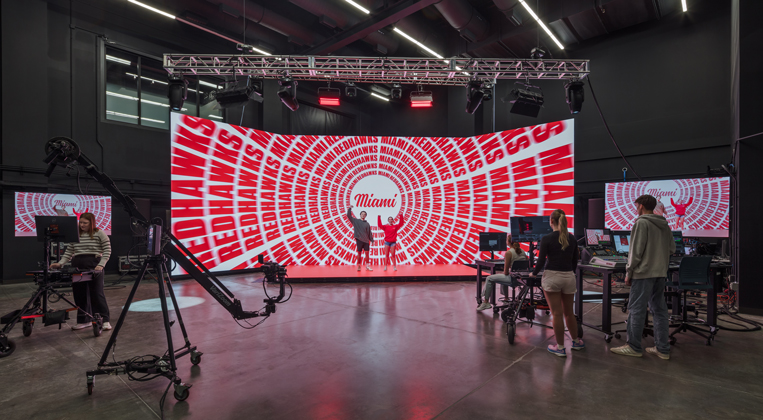
A New XR Stage Drives Innovation
Miami University's commitment to advancing education in digital arts, data science, and digital technology is exemplified by the innovative XR Stage. This state-of-the-art space blends augmented, mixed, and virtual reality with an LED-based workflow to create a live, immersive environment where content can be generated in real time, giving students hands-on access to cutting-edge resources.
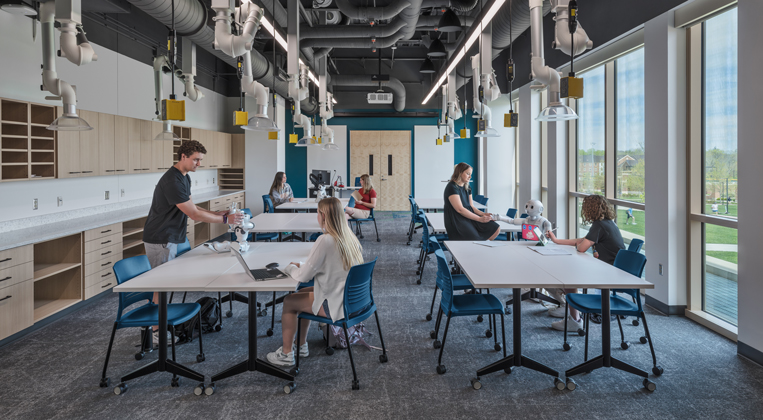
A Hub for Collaboration
A key focus in the design of the McVey Data Science Building was fostering collaboration. The space includes a diverse range of shared areas—14 classrooms, 12 conference and seminar rooms, and 88 offices—supporting transdisciplinary research, industry partnerships, and academic instruction.

